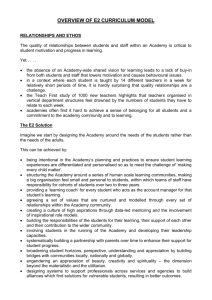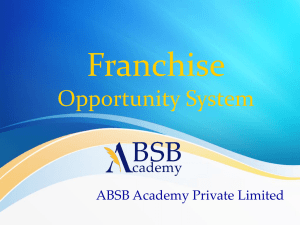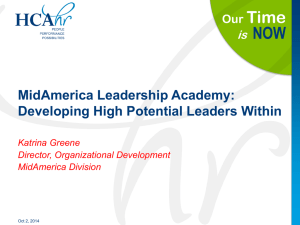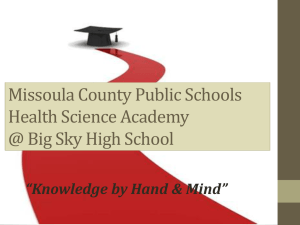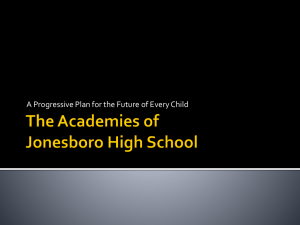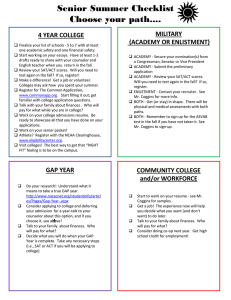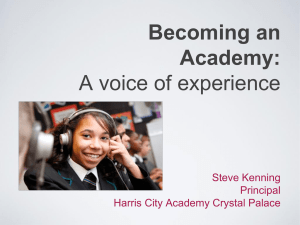Victor Callan and Neal Ashkanasy
advertisement
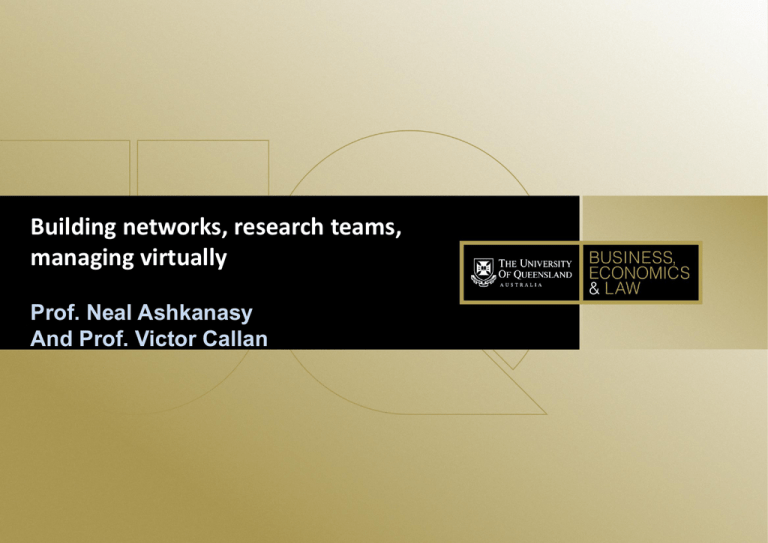
Building networks, research teams, managing virtually Prof. Neal Ashkanasy And Prof. Victor Callan 1 Outline 1. Using conferences to your full advantage to build networks 2. Working effectively in research teams 3. Managing virtuality 2 Using conferences to their full advantage Do your homework Example - The Academy Web Site • Http://www.aomonline.org • Membership forms • Annual Meeting Programs • Searchable membership list • Information about Divisions and Interest Groups • Submission of conference papers • Journals – Information for authors – Electronic submission – On-line journals 3 25 Divisions of the Academy Business Policy & Strategy Careers Conflict Management Critical Management Theory Entrepreneurship Gender and Diversity in Organizations Healthcare Management Human Resources International Management Management Consulting Management Education & Development Management History Management, Spirituality and Religion* Managerial & Organizational Cognition Operations Management Organization Development & Change Organization & Management Theory Organizational Behavior Organizational Communication & Information Systems Organizations & the Natural Environment Public & Non-Profit Research Methods Social Issues in Management Strategizing Activities and Practices* Technology & Innovation Management *Interest group 4 Avoid getting lost at conferences • Example of the US Academy • Around 10000 delegates! • How to avoid getting lost: – Social programs for those “in the know” – Stick with your ‘home’ division – Let your ‘fellow country’ people introduce you to their overseas colleagues – Be brave and say ‘hi’ to complete strangers 5 Look for the international dimensions • Example of the US Academy • 45% of Academy papers are international (not based in the USA) • Activities of the International Themes Committee (ITC) • International programs run by Divisions, especially IM 6 Seek out professional development workshops at conferences • Workshops – e.g. “Cognition in the Rough” • Research and methods training • Consortia – Doctoral (New and senior) – New faculty – “Not so new” faculty • Teaching 7 Seek to get up a symposium • US Academy example • Four types of Symposium – – – – Single Division Symposia Multiple (up to 3) Division Symposia “All Academy” Symposia* “Showcase” Symposia* *Special category • Approx. 67% acceptance • “Panel” format or 3-5 papers • Not blind-reviewed 8 Be on the regular program • Give a paper • Set up special interest discussions or round table discussion groups • Or attend and ask good questions at these • Ask good questions from the audience • As for business cards and follow up • Talk to people between sessions, coffee, at social events (miss sessions to have private meetings) 9 Paper tips for getting noticed and accepted US Academy as an example • Papers may be theory/review or empirical • Must be well written and fully copy-edited • Significance of contribution must be clear • All papers must be logically sound • Empirical papers must be methodologically strong • Make papers available on conference, personal or other web sites 10 Volunteer to serve on a program committee • On-line sign-up • 3-5 papers and/or symposia to review, (Depends on size of division, size of program committee, and number of submissions) • Available to serve as session chair or discussant • Advantages – Exposure to submissions – Networking 11 Volunteer to be a reviewer • Meet the turn-around deadline • Provide detailed and insightful reviews • Remind the chair of a session/interest group of your efforts in doing a review, and future interest • Use doing reviews as a learning experience but do not be too generous – it is OK to say no 12 Activity 1. Think about a situation where you were a member of a high performing research team 2. What happened to achieve this outcome? 3. How did you feel and the other(s) feel about this experience? 4. What advice would you give others towards building a high performing research team? 13 Positives of being on a research team 1. Allows you to learn more about a research area quickly 2. Teams bring different expertise together 3. Brings together the power or each other’s networks to the advantage of the team and its individuals 4. You become more productive 5. To get tenure/promoted it is expected that you can show you can work in a team 14 Negatives of being on a research team 1. Diversity brings conflict 2. Researchers are not good at managing conflict or showing their disappointment in others 3. Teams can take a long time to be productive 4. There is always social loafing 5. Differences of opinions about the best locations to send the work for review (their favoured journals or yours) 6. At their worst dysfunctional teams can lead to cases of research misconduct 15 Lack of support for research team leaders 1. Expectations for research success are escalating, but with little support to increase the required outcomes 2. Research leaders are not formally inducted into their roles 3. Research team leaders are vulnerable to shifts in their context and funding for their research 4. PhD graduates are not well-prepared in the areas of team skills, grant seeking and project management, let alone leadership capabilities 5. There is little understanding or infrastructure to support the development of research leadership capabilities 16 16 Research teams: Helpful hintsof the relationship • Develop a reputation as someone that people like to work with • Developing an effective working relationship requires that you know the needs, strengths and weaknesses, and personal styles of your colleagues – spend time together on the project and socially • Try to set a team charter • Allocate roles, accountabilities and deadlines • It is OK to express annoyance at team members • Do not forget that they are human • It is OK to form new teams without members of the old 17 teams Conclusion … 18 Thank You! n.ashkanasy@uq.edu.au v.callan@uq.edu.au 19


